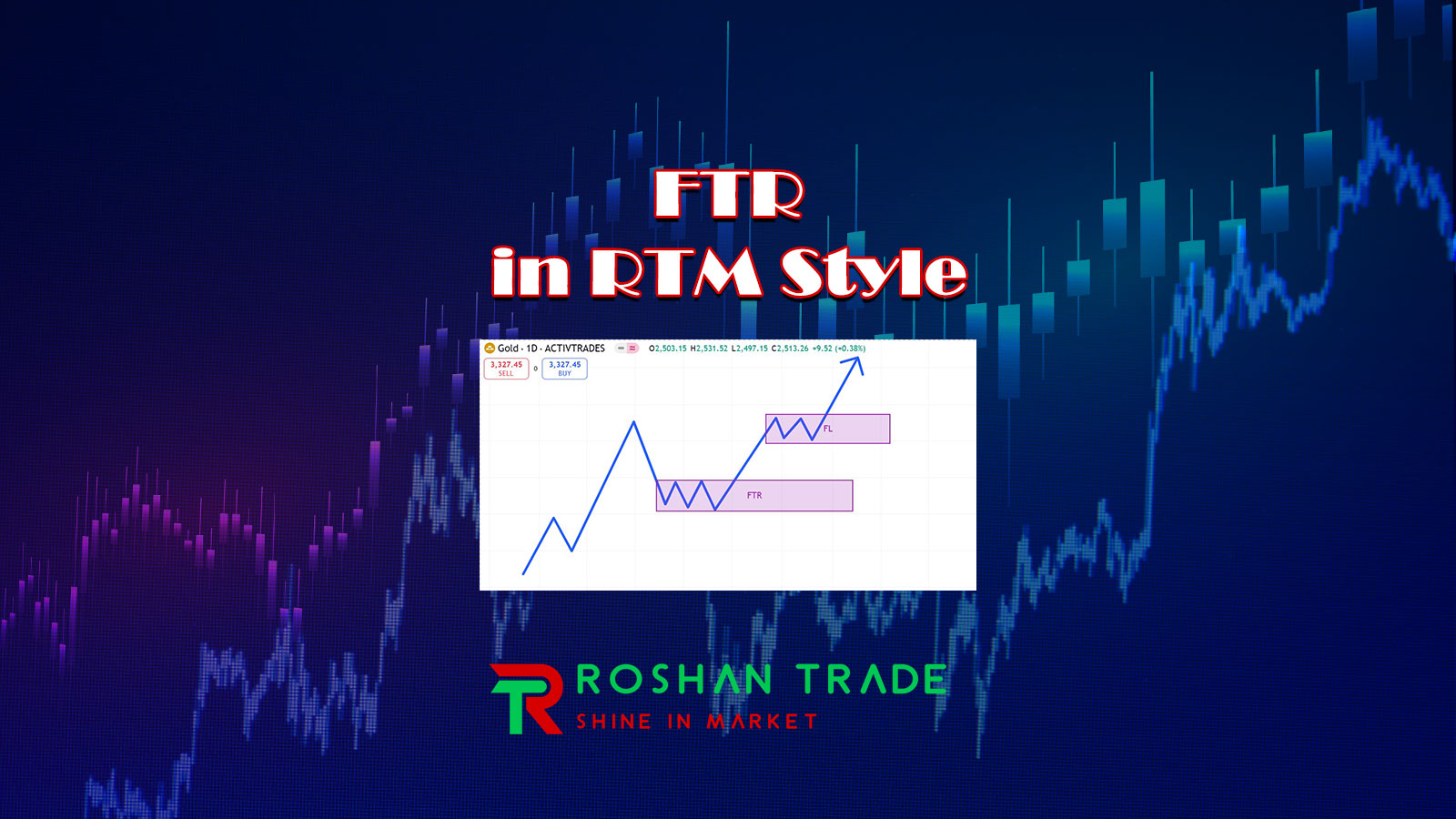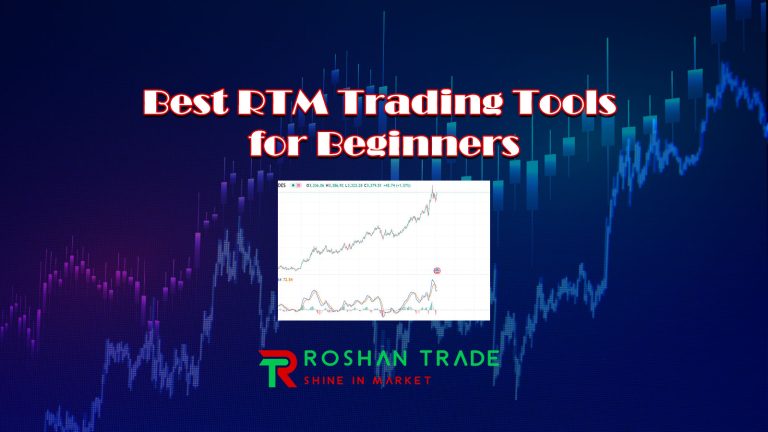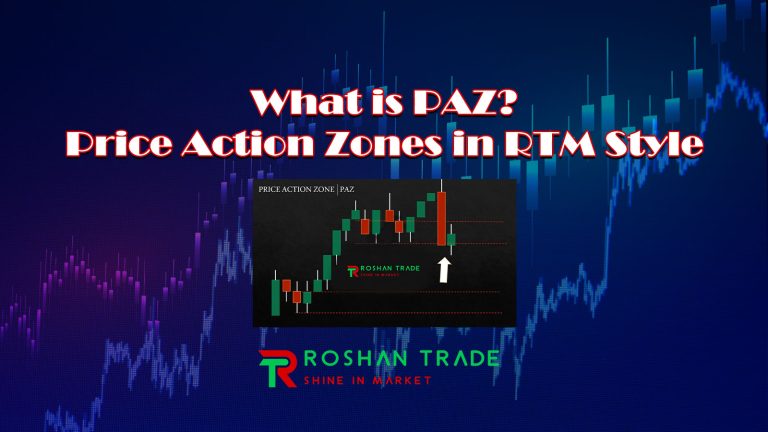In today’s world, trading happens very fast and traders are looking for a suitable strategy that can catch up with this speed and not fall behind. The RTM trading style focuses on understanding the organizational order flow and market structure, so it can be one of the best options for you to stay in this market. Forex, crypto or digital currency traders can all use the RTM style for their trading and it will be profitable for them, but keep in mind that you need to reach a level of mastery of a style to be able to make good money from it, otherwise everyone has basic knowledge of the financial markets these days.
Today, in this article, we are going to examine a key concept in RTM called FTR. The meaning of this phenomenon is a failed reversal and as you can guess from its name, it does not allow the price to continue its correction process too much. So it is one of the reversal patterns and if you want to find it, you should look for it during reversals. FTR is like a solid wall that stands in front of the price and prevents it from reversing too much, so it is a powerful signal that helps traders identify key levels.
Mastering FTR in the RTM framework can significantly change your decision-making process. You probably have a lot of questions in your head by now and you have question marks that you are looking for answers to. Why does FTR form and what does it mean? How can you use it in your trading? What are the common mistakes when using this pattern? Stay with us to find the answers to all your questions until the end of this article.
What is FTR (Failed to Return) in RTM Style?
FTR is a price action concept that we use in the RTM style to know where the price tried to return and failed. If you have entered the world of trading, you must have had an uptrend and then the price started to fall and after creating a level, it continued its upward trend again. We call that level that prevented the market from collapsing further. In general, FTR occurs when the price tries to retest a key level (such as a liquidity pool, order block or imbalance) but does not fully return, which indicates a change in market control.
- Key Characteristics of FTR in RTM:
| Term | Definition | Market Implication |
|---|---|---|
| FTR (Failed To Return) | Price fails to retest a key level fully before reversing | Indicates weakening momentum and potential trend change |
| Liquidity Pool | High-volume zones where stop losses cluster | FTR near liquidity suggests traps and reversals |
| Order Block | Institutional buying/selling zones | FTR at order blocks confirms institutional rejection |
| Imbalance | Unfair price gaps (buying/selling inefficiency) | FTR near imbalances signals continuation or reversal |
FTR is closely related to changes in market structure, where the price cannot complete a correction, indicating that the dominant market participants (banks, institutions) are no longer interested in pushing the price in that direction.
How to Identify FTR in Price Action?
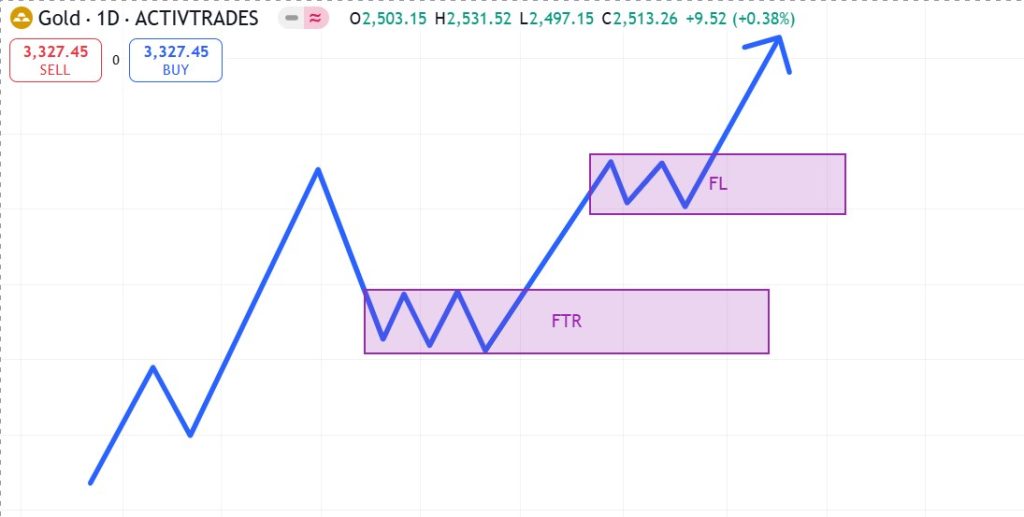
Knowing the FTR is the first step in understanding this pattern. If you don’t know something, you can’t use it. The second step in using the FTR is how to recognize it. We need to know how the FTR shows itself on the chart and understand the market structure. How to recognize the FTR is not too difficult and as you can see in the figure, you can see what the FTR looks like under the limit flag. To be able to recognize it better, you can follow the following steps:
- Look for key levels such as liquidity pools and order blocks and keep these areas in mind
- The price approaches a key level, but does not fully retest it before reversing, which is called a price rejection. The rejection is often sharp, with strong candlestick patterns (e.g., pin bars, dipping candles).
- A valid FTR is supported by decreasing volume on the retest, indicating lack of interest. Momentum indicators (e.g., RSI, MACD) may show divergence and reinforce the reversal signal. For example, if the price peaked at $90, and then tried to pull back but only reached $100, it would indicate weakness.
How to Trade FTR in RTM Style?
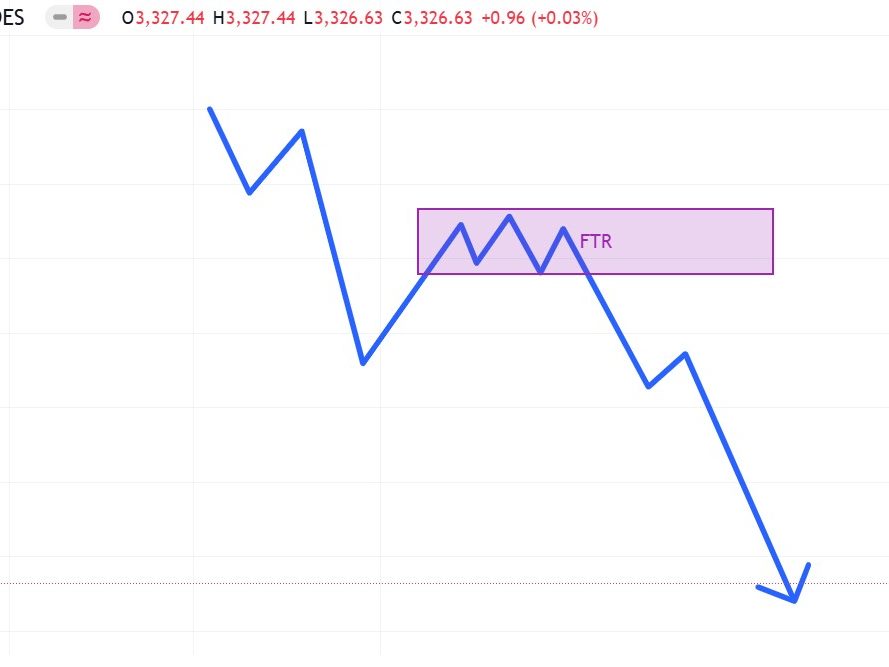
To better understand the situation and understand exactly what we are doing step by step, below we will teach you step by step how to make the most of FTR and build a profitable strategy for yourself.
Step 1: Mark Key Levels
- Identify recent swing highs/lows, order blocks, and imbalances.
- Use volume profile to spot high liquidity zones.
Step 2: Wait for Price to Approach & Fail
- Price should partially retest but not fully reach the level.
- Look for strong rejection candles (e.g., wicks, bearish/bullish engulfing).
Step 3: Enter with Confirmation
- Bullish FTR: Enter long after price fails to return lower and breaks a minor high.
- Bearish FTR: Enter short after price fails to return higher and breaks a minor low.
Step 4: Manage Risk
- Place stop-loss beyond the recent swing point.
- Take profit at next liquidity zone or using a 1:2 or 1:3 risk-reward ratio.
Common Mistakes When Trading FTR
Many traders think that FTR is useless because of their negligence, but it is not! Some of the people you will find in abundance are those who enter trades on every retest. Not every pullback is an FTR and you should wait for clear rejection signals before entering. Some other people you will see are those who follow FTR on the 5-minute time frame and do not pay any attention to higher time frames. If the daily trend is strong, an FTR on the 5-minute chart is likely to fail. Some uninformed people also make themselves more confused and always clutter their charts. FTR works best with pure price action. Avoid cluttering the charts with unnecessary indicators so that you can make profitable trades.
Conclusion
FTR is not just a pattern, but by understanding it thoroughly, you can know when big institutions and smart money lose interest in a price level. Using FTR, you can spot reversals earlier and stay away from fake-outs. If you are one of those who think you can make a lot of money from the financial markets, you should note that FTR is a powerful weapon that you can use to achieve your goal. Try to find FTR in past charts to practice and if you have any questions, let us know in the comments. The last point that can be useful in this article is that if you want to trade with FTR, try to always be up to date and don’t look for FTR in past charts too much.

